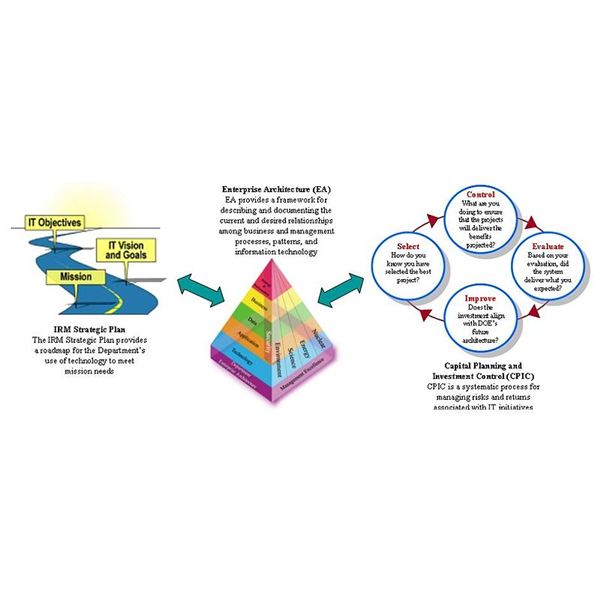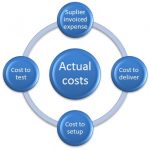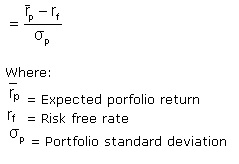Bank Reconciliation Accounting Software

Access your cash flow statement, balance sheet, and profit and loss statement in just a few clicks. Schedule reports to be generated and emailed daily, weekly, or monthly. Give your customers the option to pay via credit card, debit card, PayPal, or bank transfer. QuickBooks processes the payment and transfers the money to your bank account. There’s even a mobile card reader so you can swipe or dip the card from your phone or tablet.
How to do a Bank Reconciliation: 4 Simple Steps.
- The purpose behind preparing the bank reconciliation statement is to reconcile the difference between the balance as per the cash book and the balance as per the passbook.
- It won’t just be that you have more transactions to do, it will take longer per transaction because you’ll have a harder time recalling the details.
- Non-sufficient funds (NSF) checks are recorded as an adjusted book-balance line item on the bank reconciliation statement.
- For instance, the bank charged your business $30 in service fees, but it also paid you $5 in interest.
In such a case, your bank has recorded the receipts in your business account at the bank. As a result, the balance showcased in the bank passbook would be more than the balance shown in your company’s cash book. NSF cheques are an item to be reconciled while preparing the bank reconciliation statement. This is because when you deposit a cheque in your bank account, you consider that the cheque has been cleared by the bank. These outstanding deposits must be deducted from the balance as per the cash book in the bank reconciliation statement. Such deposits are not showcased in the bank statement on the reconciliation date.
Auto-reconciles transactions
Then, you make a record of those discrepancies, so you or your accountant can be certain there’s no money that has gone “missing” from your business. The goal of bank account reconciliation is to ensure your records align with the bank’s records. This is accomplished by scanning the two sets of records and looking for discrepancies. If you find any errors or omissions, determine what happened to cause the differences and work to fix them in your records. After adjusting the balance as per the cash book, make sure that you record all adjustments in your company’s general ledger accounts. In addition to this, the interest or dividends earned on investments is directly deposited into your bank account after a specific period of time.

Your All-Encompassing Guide to Bank Reconciliations
Cash management software allows businesses to gather real-time cash positions across the organization, helping to make better business decisions based on accurate data. Starting with an incorrect opening balance can lead to errors in the reconciliation process. It’s essential to ensure that the starting balance is accurate before beginning the reconciliation process.
To reconcile a bank statement, the account balance as reported by the bank is compared to the general ledger of a business. Once the balances are equal, businesses need to prepare journal entries for the adjustments to the balance per books. To do this, businesses need to take into account the bank charges, NSF checks and errors in accounting.

Create a free account to unlock this Template
For instance, if you haven’t reconciled your bank statements in six months, you’ll need to go back and check six months’ worth of line items. Whether this is a smart decision depends on the volume of transactions and your level of patience. One reason for this is that your bank may have service charges or bank fees for things like too many withdrawals or overdrafts. Or there may be a delay https://www.intuit-payroll.org/ when transferring money from one account to another. Or you could have written a NSF check (not sufficient funds) and recorded the amount normally in your books, without realizing there wasn’t insufficient balance and the check bounced. When you “reconcile” your bank statement or bank records, you compare it with your bookkeeping records for the same period, and pinpoint every discrepancy.
Deposits in transit are also checks that the company has presented to the bank, but the check did not clear before the preparation of the bank statement. If you’re interested in automating the bank reconciliation process, be sure to check out some accounting software options. It’s true that most accounting software applications offer bank connectivity, which can speed up the reconciliation process immensely. However, connecting your accounting software to your bank or financial institute does not take the place of doing a month-end bank reconciliation.
Designed to keep your bank and your G/L in balance, the bank reconciliation process also helps you correct possible errors, account for uncashed checks, and even locate missing deposits. In order to prepare a bank reconciliation statement, you need to obtain the current as what is document well as the previous month’s bank statements and the cash book. As a result, the balance as per the bank statement is lower than the balance as per the cash book. Such a difference needs to be adjusted in your cash book before preparing the bank reconciliation statement.
The Ascent is a Motley Fool service that rates and reviews essential products for your everyday money matters. However, there can be situations where your business has overdrafts at the bank.
These are mainly outstanding cheques and transfers done closer to the end of the month but is yet to be processed by the bank. Using a pencil, match the deposits on the debit (left) side of your general ledger with the deposits on the credit (right) side of your bank statement. Once you are finished, match the transactions on the credit side of your general ledger with those on the debit side of your bank statment. After you’ve checked all the deposits and withdrawals, your business bank balance should match the totals in your business accounts. Apart from fraud, bank reconciliation can also help a company detect errors.
Before you start reconciling bank accounts, get your bank statement, check register, and previous bank reconciliation statement first. Since the deposits in transit are not yet recorded in the bank’s records, the company’s bank reconciliation will show the deposits in transit as an addition to the bank statement balance. As mentioned above, timing differences do not require any adjustments in the bank book balance. Therefore, these items need to be part of the bank reconciliation statement only. For timing differences, the company must cancel out the effect of outstanding checks and deposits in transit.
Cloud accounting software like Quickbooks makes preparing a reconciliation statement easy. Because your bank account gets integrated with your online https://www.business-accounting.net/what-is-cost-of-goods-sold-cogs/ accounting software, all your bank transactions get updated automatically. Furthermore, each of the items is matched with your books of accounts.
Next, we look at how a bank uses debit and credit when referring to a company’s checking account transactions. Ensure that you enter all the transactions for the month in your general ledger before you begin the reconciliation process for that month. This will reduce the time taken to complete your bank reconciliation. Secondly, all items that were on the credit side of your general ledger but was not seen on your bank statement’s debit side.
